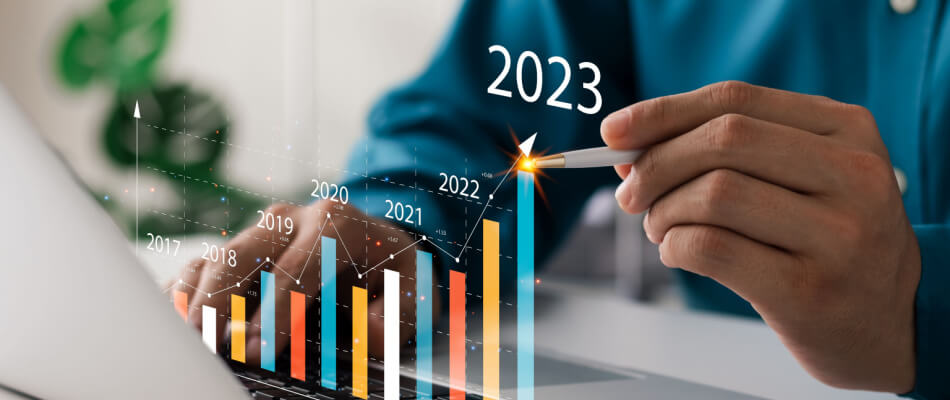Return on shares
The famous American investor Warren Buffett believes that the average annual return on stocks should be 6 to 7 percent. He bases this statement on the fact that the American domestic product grows by 3 percent each year in the long term. On top of that comes another 2 percent of annual inflation. In this way, the nominal growth of the American economy comes to a total of 5 percent.
Because companies also want to pay dividends to their shareholders, shares will have to increase in value by 6 to 7 percent each year in order to keep pace with the economy. That this situation does not always apply became painfully clear in 2008, when sharply falling share prices triggered a large-scale economic crisis. Anyone who bought shares just before that moment will have to wait a considerable time before the investment is again in line with the economic average.
Which investment option yields the highest returns?
Stocks are not the only way to invest your money. You can also choose bonds, real estate or precious metals , such as gold and silver. However, research from the University of Pennsylvania shows that stocks yield the highest returns in the long term.
Professor Russel E. Palmer of this university made a calculation whereby in the year 1802 only 1 American dollar had been invested in the very first shares that were then available on the New York stock exchange. If the investor and his descendants had reinvested the dividends received in new shares until the year 2003, then in those 200 years a share capital worth no less than 8.8 million dollars would have been collected.
The professor also looked at similar situations where only corporate bonds had been invested for 200 years. In that case, that one first dollar would have yielded only $16,064 in 2003. If the investor had only opted for government bonds, the final return would have been even less: $4,575. Finally, investing in gold was also examined in the same way. A dollar that would have been invested in gold in 1802 would have yielded only $19.75 in 2003.
From the above data, you might conclude that trading stocks is the best way to get rich. The lucrative returns speak for themselves, right…? No, that is too simplistic. Although stocks can yield interesting returns, they also come with great risks! If you had invested a dollar in stocks in 2008, there would have been very little of that dollar left in 2010.

Analyse
In order to achieve high returns, you will first have to do your homework extensively. Look at the historical price development of a company over several years and at that time also check how the share in question has survived economically tough periods. That generally gives you a reasonably good indication of developments that you can also expect with this share in the long term in the future.
If you prefer to cash in quickly by focusing on short-term investments, the financial risk you run is considerably greater. You will achieve the greatest effect by keeping a cool head when panic breaks out somewhere on the financial markets. This usually has a snowball effect, with the panic spreading to the masses and investors dumping their shares en masse, so that you can buy them at bargain prices. When calm returns to the financial world, the price of a share usually recovers, so that you can sometimes make a profit of 100 percent or more.
In order to optimally benefit from these kinds of strong price developments , it is wise to have a securities account with an online broker. This ensures that you can have your purchase and sale transactions executed quickly and efficiently at the lowest possible rates. Compareallbrokers.com offers you plenty of choice in this regard, so that there is guaranteed to be a broker in our offer that can meet all your investment needs.
Compare brokers and start investing in stocks
Are you excited about investing in stocks after reading this article? Use our comparator and find the broker that suits you best!